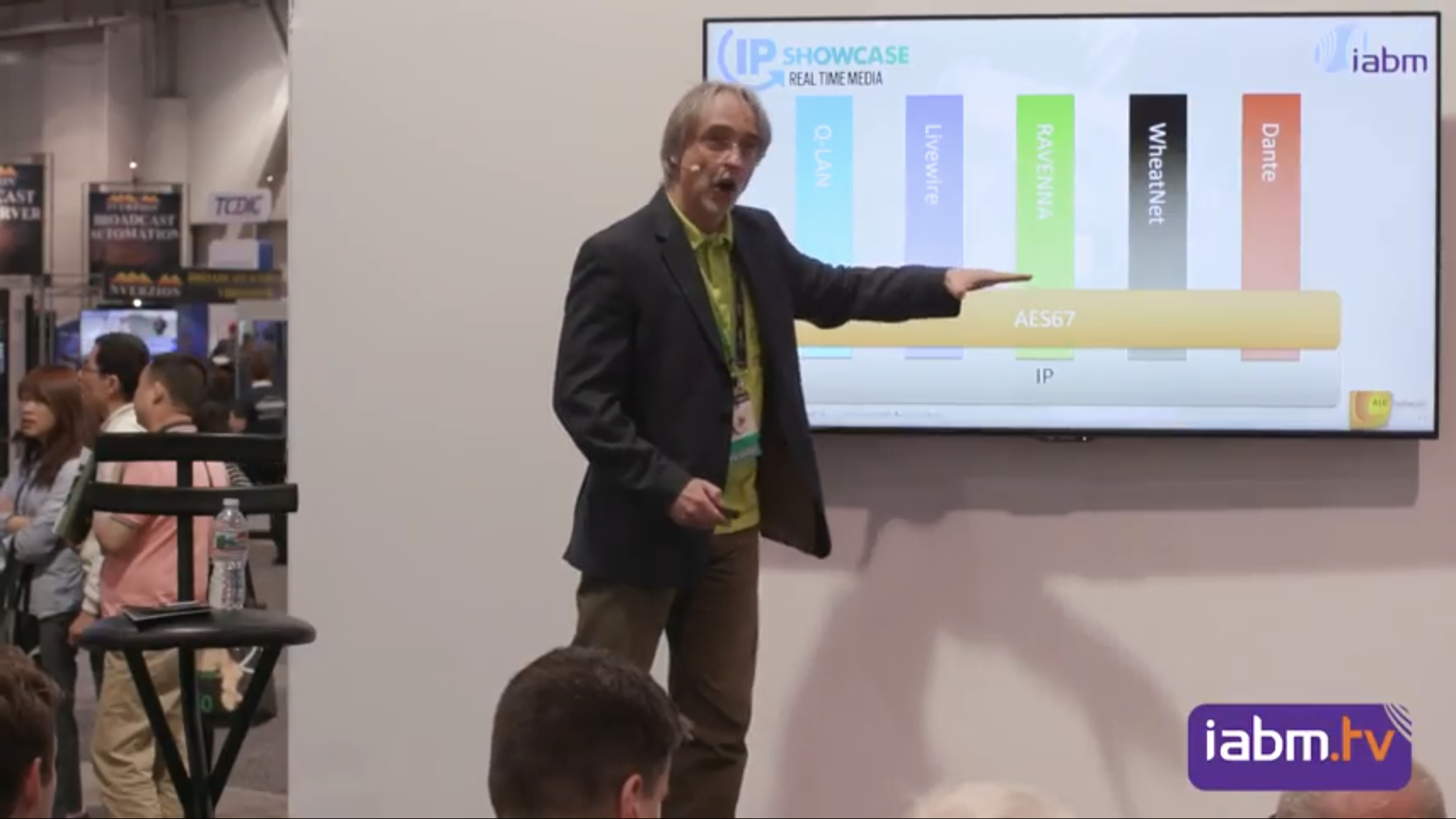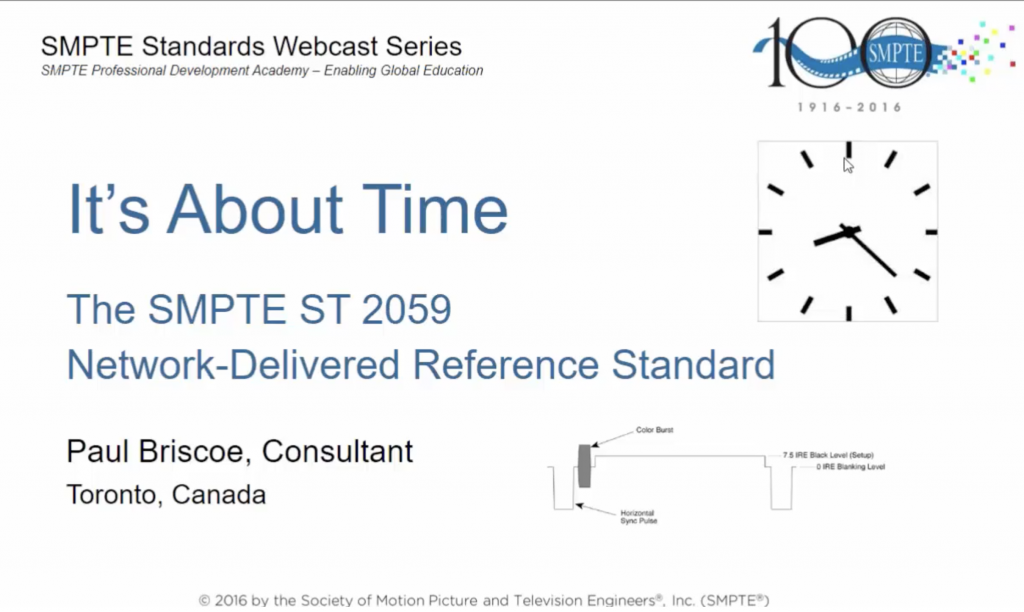
Great explanation of how AES67 and @SMPTE 2110 overlap but also where they differ. Including an overview of PTP timing: a perfect follow on from the recent @SMPTEUK meeting on the same topic at Surrey University.
Andreas Hildebrande from ALC NetworkX shows the completeness of the AES67 ecosystem and how different companies interoperate on IABM TV during NAB 2017.
ST 2110
Webinar: Where IP and SDI Meet — The Migration to Media Over IP Workflows

Webinar and On Demand: December 6th 09:00 PST, 17:00 GMT
Now that SMPTE ST 2110 has been approved, attention is focused more than ever on solving the practical challenges of migrating SDI workflows to IP.
Join industry experts from Harmonic and Lawo as they discuss the ins and outs of converting between SDI and IP, the benefits of a hybrid approach for migrating to “all IP” over time, and the implications of merging uncompressed IP with existing compressed IP transport downstream of production and playout workflows.
Topics include:
- Opportunities for new and improved workflow efficiency offered by IP
- How to deal with the conversion between SDI and IP, including playout and monitoring
- What trends are guiding the move to all IP workflows
- How to integrate the uncompressed ecosystem with compression and delivery systems
Webinar: The Early Adopters: Inside the latest IP-based facilities

Webinar & On demand: 6th December 16:00 GMT
Real-world experience of implementing IP from BBC Wales, Rhode & Schwarz, BCE, SMPTE’s Bruce Devlin examining how broadcasters and suppliers are meeting this transition and what real-world benefits the IP revolution can bring broadcasters, vendors and audiences.
SMPTE UK Governor and incoming SMPTE Standards VP Bruce Devlin will be joining Roger Crothers Head of Technology BBC Wales, Costas Columbus Manager Major Projects BCE and David Smith R&S to discuss the switch from SDI to IP-based broadcast studios which is now well under way.
On-demand Webinar: “It’s about time” SMPTE ST 2059 Network-Delivered Reference
The SMPTE ST 2059 standards suite provides a method to accommodate all legacy reference and media signals using IEEE-1588 Precision Time Protocol (PTP), delivered over an IP network. This webcast examines how this new way of synchronizing systems will affect legacy, hybrid, and future all-IP infrastructures.
Beginning with an overview of PTP, Paul Briscoe demonstrates how the ST 2059 standard uses this foundation to establish deterministic relationships between global real-time and media signals. It explores how equipment using PTP meets synchronisation requirements instead of legacy reference signals and how timecode is virtualized. The webcast then examines product design considerations for hybrid environments, focusing on how a common reference subsystem can use either legacy or hybrid forms of reference, enabling equipment to evolve alongside user requirements. An explanation on how ST 2059 brings together legacy and new systems for this new method to be applied to live IP infrastructures will be offered. The webcast closes with a discussion on system design considerations, focusing on ways to incorporate technology islands in a hybridised architecture.


